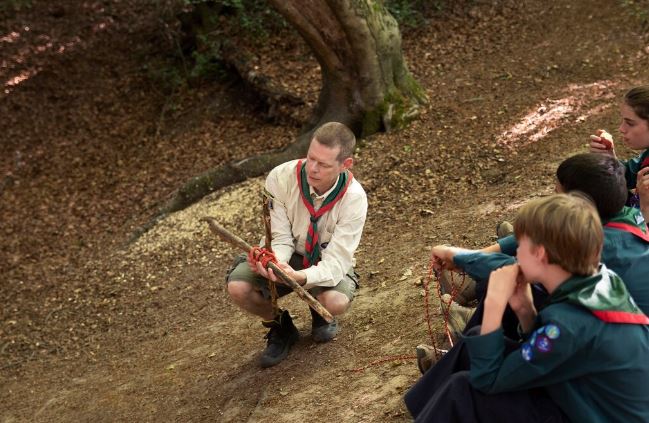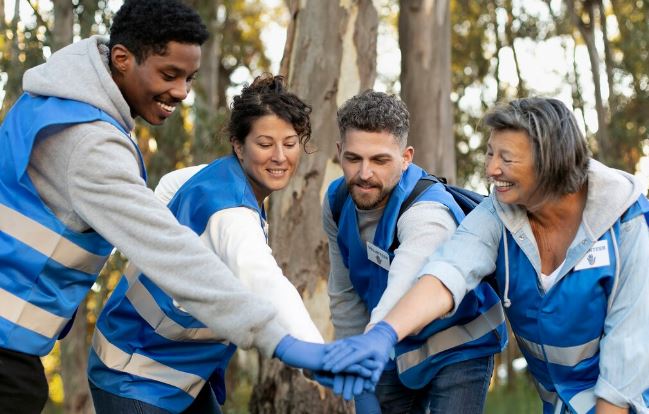
It’s often like walking on uneven terrain when growing up in Northern Ireland. Young people describe it as a mixture of tension and comfort, similar to living in a familiar home where memories you’d prefer to forget still reverberate in some rooms. While attempting to construct their own version of adulthood, they bear the burden of history. People tend to gravitate toward communal areas where they can move freely. When all else seems unclear, these communal spaces provide remarkably clear guidance.
One recurring theme in their narratives is mobility. It can feel like you’re avoiding invisible boundaries when you move between neighborhoods. Some people boldly cross them. Others are hesitant. Even though the lines aren’t painted on pavements, people still feel them strongly. Young volunteers cross boundaries that previously governed their actions when they participate in storytelling circles or mixed music programs. Every time they do it, their bravery grows. Tension can be significantly reduced by these actions.
| Topic Information | Details |
|---|---|
| Region Focus | Northern Ireland |
| Core Theme | Lived experiences of young people growing up amid social shifts |
| Key Influencing Institutions | Community Relations Council, Volunteer Now, Community Foundation NI |
| Social Challenges | Sectarianism, trauma, mental health pressures, racist violence, funding instability |
| Major Youth-Driven Movements | Circle of Change, Equity in Action Fund, RTÉ Toy Show Appeal, Leaders for Nature Programme |
| Reference Link | https://www.community-relations.org.uk |
| Key Narrative Elements | Mobility, identity, resilience, belonging, volunteering patterns |
| Emerging Trends | Grassroots philanthropy, cross-community arts, digital transformation, environmental action |
The flow of stories, according to one youth program leader, is like a “swarm of bees,” buzzing with vitality and purpose. Humans naturally follow one another. They travel around a common goal. They react fast. The analogy is appropriate. A sense of motion is produced by these youthful volunteers. a feeling of advancement. With every experience they have together, their confidence increases noticeably.
Strong insight into how young people’s lives change over time can be gained from the long-term study that has been tracking them since 1997. The pattern is consistent across interviews. Silently, stress accumulates. Pressure lands abruptly. Particularly young men tend to withdraw into quiet. Their hardships are unseen until they become apparent. Many acknowledge that they had no idea where to turn for assistance. That ignorance turns into an obstacle. Youth-led mental health initiatives today seek to alter that perception. They provide peer-led assistance. Young leaders are taught to speak up. Because there is already trust in the group, their strategy works very well.

According to one young man, juggling caregiving responsibilities, temporary training, and employment was like juggling knives. Hard. Quick. dangerous. His tale is not unique. That rhythm is lived by many. They leave home and come back just as fast. Financial strains cause them to retreat. Expectations from their families also pull on them. These same young adults, however, are seated in rooms with individuals from various backgrounds during the Circle of Change sessions. relating tales. raising money. Selecting worthwhile projects. It establishes a highly adaptable support system.
These initiatives are strengthened by the Equity in Action Fund. It supports initiatives that address trauma, hate, and false information. Its grants are especially helpful for organizations with modest budgets but lofty goals. Intergenerational circles, youth-led fact-checking sessions, and anti-racism workshops encourage young people to challenge established norms. They are taught how to identify deceptive posts by FactCheckNI. When compared to previous strategies that mainly relied on conventional campaigns, this support is noticeably better.
The experiences of young people are increasingly influenced by digital transformation. To increase access and skills, community organizations are now creating digital hubs. Young people take the lead in teaching others new skills, troubleshooting gadgets, and adopting new techniques. Instead of making digital change seem daunting, their presence makes it feel approachable. Organizations link community service and digital skills through strategic partnerships. They open doors that are advantageous to all.
Where young people feel safe is still influenced by sectarian residue. Some remember avoiding certain streets as kids. Others continue to follow unwritten guidelines regarding their nighttime walking routes. However, Equity in Action-funded projects seek to break that cycle. Youth participants gain the ability to discuss bias and false information in an open manner. They examine how fear is stoked by internet rumors. Their meetings serve as a safeguard against escalating hostilities. It feels like an empowering process. Their clarity and confidence increase.
The issue of funding instability persists. Many community organizations fear that if funding stops too soon, creative approaches to peacebuilding will wane. Young volunteers are acutely aware of this uncertainty. Their goal is to gain momentum. They wish to maintain innovative solutions. The RTÉ Toy Show Appeal grants lessen the strain. These grants enable organizations to increase the number of children’s and teens’ creative therapy sessions. It has the effect of greatly lowering stress levels for families dealing with adversity.
Numerous factors influence volunteerism patterns. Parents. peers. socioeconomic setting. However, volunteering is also a natural instinct in Northern Ireland. A lot of young people take action without referring to it as “volunteering.” They bring groceries. Assist your neighbors. Assist senior citizens. They cover the gaps left by formal systems. These behaviors turn into ties that bind communities together. They create a sense of belonging. They make identity stronger.
An additional dimension is added by environmental awareness. The loss of biodiversity is urgently examined by young leaders in the Leaders for Nature Program. They safeguard natural areas. Restore the land. Inform communities. Their initiatives are exceptionally successful because they integrate lived experience with scientific knowledge. They improve relationships and restore land through community nature gardens, bee conservation, and tree planting.
Young fathers in particular face many difficult obstacles. They balance work, parenting, and their emotions. Small, consistent acts demonstrate their tenacity. Stories of single fathers raising children in the face of personal hardships are highlighted in the study. Their resolve is remarkably resilient. Every choice they make is motivated by their love for their kids.
Philanthropy in the community adds hope. Every year, giving circles get stronger. People come together to support vulnerable groups through organizations like Give Inc. and the Women’s Fund. These programs remove obstacles and simplify the act of giving. They provide simplified procedures that are surprisingly inexpensive and simple to use. Donors are able to concentrate on impact.
One fact emerges from all of these layers: Northern Ireland’s youth are driving change. They talk about their experiences. They work together. They devote their energies to worthwhile causes. What it means to grow up here is reimagined by them. They carry forward a grounded hope with every action. Their tales shape a resilient, compassionate, and connected future.